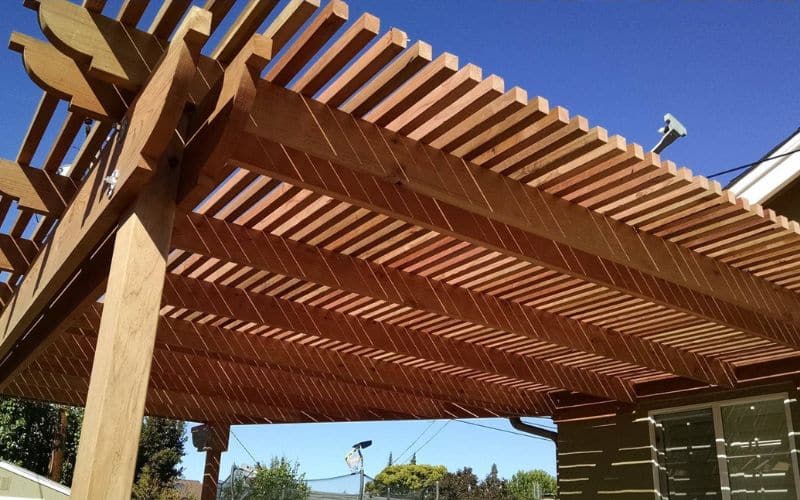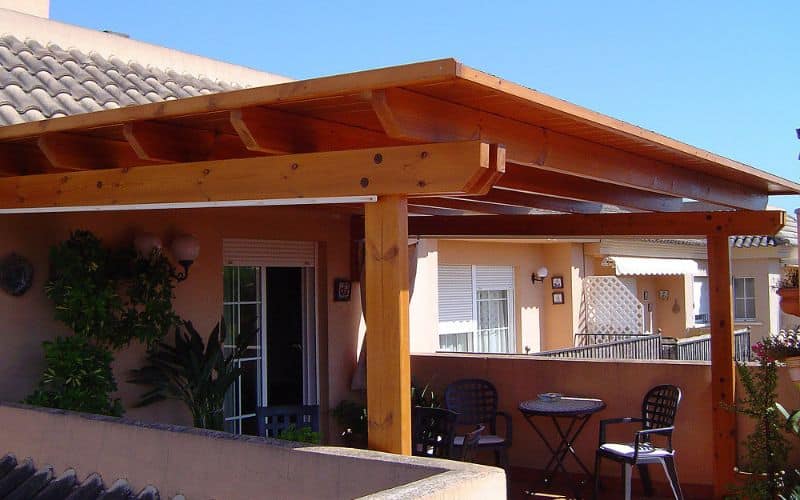
There’s a certain charm to a pergola, with its lattice roof and open sides, that can transform any backyard into a tranquil retreat. But when your pergola starts to wobble, it can quickly turn from a peaceful haven into a safety concern. So, how do you stabilize a wobbly pergola and keep it from swaying? Let’s dive into it.
What Makes a Pergola Wobble? Understanding the Basics
A pergola can wobble for a variety of reasons, but the most common culprits are poor installation, inadequate bracing, and the use of low-quality materials. Understanding these factors can help you take the necessary steps to stabilize your pergola and prevent it from swaying.
The Role of Proper Installation in Stabilizing Pergolas
The installation process plays a crucial role in the stability of your pergola. If the posts are not anchored securely into the ground, the pergola can easily wobble and sway. The depth of the post holes is particularly important. As a rule of thumb, the holes should be about a third of the height of the posts. Filling these holes with concrete can provide a solid base that resists movement, helping to stabilize the pergola.
How Deep Should Pergola Posts Be for Optimal Stability?
The depth of the pergola posts can significantly impact the stability of the structure. As mentioned earlier, the holes for the posts should be about a third of the height of the posts. This means if your pergola posts are nine feet tall, the holes should be about three feet deep. This depth provides a solid foundation that can help prevent the pergola from swaying.

To Brace or Not to Brace: How Can Bracing Prevent a Wobbly Pergola?
Bracing is another effective way to stabilize a pergola. By adding diagonal braces at the corners of the pergola, you can distribute the load more evenly and resist the lateral forces that cause swaying. Braces can be made from the same material as the pergola for a seamless look, or from a contrasting material for an added design element.
Choosing the Right Materials: Does the Type of Wood Affect the Stability of Pergolas?
The type of wood you choose for your pergola can also affect its stability. Heavier woods like cedar or redwood can provide more rigidity than lighter woods like pine. Additionally, these heavier woods are often more resistant to weather and pests, which can extend the lifespan of your pergola.
The Importance of Beams in Pergola Construction: How Do They Help?
Beams are another crucial component of pergola construction. They provide structural support and help distribute the weight of the pergola evenly. When beams are securely attached to the posts using brackets, they can significantly enhance the stability of the pergola.

Anchoring Your Pergola: How to Do It Right?
Anchoring your pergola securely is crucial to prevent it from swaying. This involves digging deep post holes, filling them with concrete, and ensuring the posts are level. Once the concrete has set, you can then attach the beams and brackets to the posts. It’s important to use high-quality screws or bolts to ensure a secure connection.
How to Securely Attach the Top of Your Pergola to Prevent Swaying
The top of your pergola can act like a sail in the wind if not secured properly, leading to unwanted swaying. Using screws or bolts to secure the top to the posts can prevent this issue. Remember, a secure top equals a stable pergola.
The Role of Brackets in Stabilizing Pergolas: What You Need to Know
Brackets play a key role in stabilizing pergolas. They connect the beams to the posts, creating a rigid frame that resists swaying. When choosing brackets for your pergola, opt for heavy-duty options that can withstand the weight of the structure and the forces of nature.
Adding Weight to Your Pergola: Can It Help Stabilize the Structure?
Adding weight to your pergola, such as hanging plants or decorations, can also help stabilize the structure. However, it’s important to ensure your pergola is designed to handle the additional weight. When done correctly, these additions can not only enhance the stability of your pergola but also add to its aesthetic appeal.

Maintaining Your Pergola: Regular Checks to Prevent Wobbling Over Time
Regular maintenance is key to keeping your pergola stable over time. This includes checking the structure for any signs of damage or wear, tightening any loose screws or bolts, and replacing any damaged parts. By taking these steps, you can ensure your pergola remains a safe and serene spot for many years to come.
In conclusion, here are the key points to remember when it comes to stabilizing your pergola and preventing it from swaying:
- Proper Installation: Ensure the posts are anchored securely into the ground. The depth of the post holes should be about a third of the height of the posts.
- Bracing: Add diagonal braces at the corners of the pergola to distribute the load evenly and resist swaying.
- Quality Materials: Choose heavier woods like cedar or redwood for more rigidity. These woods are also more resistant to weather and pests.
- Secure the Top: Attach the top of the pergola to the posts using screws or bolts to prevent it from acting like a sail in the wind.
- Use of Brackets: Use heavy-duty brackets to connect the beams to the posts, creating a rigid frame that resists swaying.
- Adding Weight: Consider adding weight to your pergola, such as hanging plants or decorations, to help stabilize the structure. Ensure your pergola is designed to handle the additional weight.
- Regular Maintenance: Regularly check the structure for any signs of damage or wear, tighten any loose screws or bolts, and replace any damaged parts.
Remember, a stable pergola is not only safer but also more enjoyable. So, take the time to ensure your pergola is well-built and well-maintained. Happy gardening!
Colin Macmillan is a seasoned entrepreneur and the CEO of Riverwood Landscape, a leading landscaping company based in Canada. He has been at the helm of the company since leaving high school, demonstrating his strong leadership skills and business acumen.
Colin’s expertise lies in various aspects of landscaping, including lawn care, interlocking, sod installation, and commercial maintenance. His hands-on approach and dedication to the craft have been instrumental in building Riverwood Landscape into a reputable brand.
One of his most notable achievements is the creation of a successful landscape franchise that services multiple locations. This accomplishment underscores his strategic thinking and ability to scale operations effectively.
Colin has also had the privilege of working with Guelph Hospital for landscaping and maintenance, a testament to the trust and reliability that his company has earned over the years.
His professional mission is to offer the best services and experiences for customers, a goal that he tirelessly pursues. Colin’s commitment to excellence and customer satisfaction continues to drive the growth and success of Riverwood Landscape.








